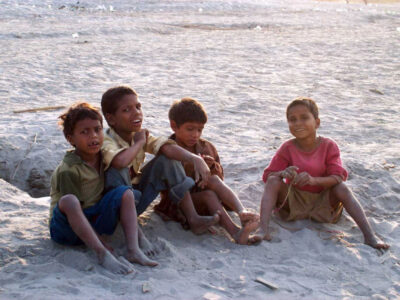Project Info
Project Description
Social protection refers to policies and programs designed to prevent or alleviate poverty and vulnerability. In the context of children, social protection seeks to ensure that children have access to essential goods and services, including healthcare, education, and nutrition, as well as protection from risks such as abuse, exploitation, and neglect.
Social protection programs for children aim to reduce inequality and address the root causes of poverty and vulnerability. They often target the most disadvantaged and marginalized children, including those living in extreme poverty, with disabilities, or in conflict-affected areas.
These programs can take various forms, including cash transfers, social insurance, public works programs, and school feeding programs, among others. They can be delivered through various channels, including governments, non-governmental organizations, and community-based organizations.
Effective social protection for children requires a comprehensive and integrated approach, as well as strong partnerships and collaboration across sectors and stakeholders. It is essential for ensuring that all children have the opportunity to reach their full potential and live a life free from poverty and deprivation.
Mega-map of systematic reviews and evidence and gap maps on the interventions to improve child well-being in low- and middle-income countries
FUNDER: UNICEF

©Diganta Talukdar
Background
The Child Well-being Mega-map is a comprehensive resource that presents a collection of systematic reviews and evidence and gap maps (EGMs) that focus on improving child well-being in low- and middle-income countries (LMICs). The studies included in the mega-map aim to provide evidence on the effectiveness of interventions in various domains, such as early child development, health and nutrition, education, social work and welfare, social protection, environmental health, and governance.
The mega-map is structured around a matrix of interventions and outcomes primarily based on the strategic plan of the United Nations Children’s Fund (UNICEF), offering an interactive and visual platform for exploring completed and ongoing studies.
Approach
The mega-map displays a total of 356 studies published between 2000 and 2018, focusing on interventions aimed at improving the well-being of children aged 18 years and under in LMICs. It includes systematic reviews that meet the inclusion criteria regardless of whether they identify studies from LMICs or not.
This matrix includes seven intervention categories, namely early child development, health and nutrition, education, social work and welfare, social protection, environmental health including water, sanitation, and hygiene (WASH), and governance.
What we found
- The mega-map includes 333 systematic reviews and 23 EGMs on interventions to improve child well-being in LMICs.
- Traditional areas of intervention such as health and nutrition (234) and early child development (194) have substantial evidence.
- Non-traditional areas such as social work & welfare (44), environmental health including WASH (41), and governance (12) have limited evidence synthesis.
- Health (259) and healthy development (215) are the most commonly studied outcomes, while economic impact (42) and risk factor reduction (55) are less frequently measured.
- 26% of the reviews were identified to be of low quality.
- There is a lack of evidence on vulnerable children, specifically those with disabilities and those in conflict-affected settings.
- Reviews were almost equally distributed across regions with sub-Saharan Africa (292) and South Asia (268) having the highest number of reviews.
Read report
Lead author – Dr Ashrita Saran
Interventions for reducing violence against children in low‐ and middle‐income countries: An evidence and gap map
FUNDER: UNICEF

©UN Women
Background
The EGM for violence against children is structured around the INSPIRE framework and includes studies on all types of violence against children aged 0-18 years, as well as parents, carers, and professionals involved in supporting them.
The framework consists of seven strategies, including implementation and enforcement of laws, norms and values, safe environments, parent and caregiver support, income and economic strengthening, response and support services, and education and life skills. The EGM focuses on interventions targeting specific forms of violence against children, such as corporal punishment, peer violence, including bullying, and intimate partner violence.
Approach
The map contains a total of 152 studies, which include 55 systematic reviews and 97 impact evaluations.
What we found
The EGM on violence against children includes 152 studies: 55 systematic reviews and 97 impact evaluations.
- Education and life skills, income and economic strengthening, and parent and caregiver support are the most commonly studied interventions.
- Direct impact on violence against children is the most frequently measured outcome in impact evaluations, followed by changing norms and values and safety and risk factors for other harms.
- Most studies are concentrated in Sub-Saharan Africa and South Asia, and there is a lack of impact evaluations in conflict-affected settings.
- Many of the systematic reviews were assessed to have methodological limitations, particularly those related to parent, child and caregiver support and to norms and values interventions.
Read report
Lead Author: Prachi Pundir
Second Author: Ashrita Saran
